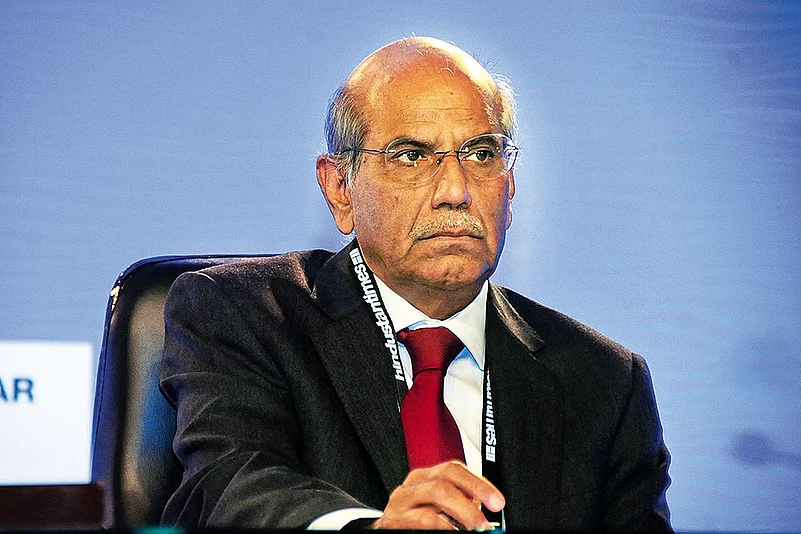India’s geography has not only ancho-red it in a compact and cohesive sub--continent, it has also placed it at the junction of international commerce and culture, so that over several millennia Indian footprints have sha-ped a diverse tra-dition of commercial, religious and int-ellectual int----er--action with its ext-ended neighbourhood.
Looking Out The Window
Except on our ties with West Asia and jehadi terror, Saran’s lucid account correctly details our national interests, with an advocacy of a multi-polar world

India also has a rich tradition of statecraft, expounded by Kautilya in the third century BC and Kamandaki, in his Nitisara, six hundred years later, which set out the sources of national power and the instruments available to promote national interest, including peace, war, alliances and neutrality.
This legacy has given India a clear sense of its own identity and, as Shyam Saran notes, has also ensured a high degree of independence in its policy approaches. Thus, non-alignment, though couched in moral terms, was in fact an assertion of ‘strategic autonomy’ in the dichotomous, hostile world order of the Cold War, an approach that continues to have resonance in today’s contentious world order.
Not surprisingly, India’s priority interests and principal security challenges rel-ate to its ties with its South Asian nei-ghbours and China. In South Asia, India engages with much smaller polities that jealously guard their independence in the face of what they see as encroachments from their giant neighbour. Saran points out that despite an open border and mas-sive development assistance, Nepal’s elite tends to view India “as a threat rather than an opportunity” and cynically att-empts to play the China card to ‘balance’ what it views as India’s abridgements of its autonomy. Saran describes Pakistan as a “state with hostile intent”, and, given the widely divergent narratives of history, religion and mutual and grievances of the two countries, he is convinced that bilateral ties will remain “deeply adversarial”.
Saran suggests a tough response to cross-border terror, based on highlighting human rights abuses in occupied--Kashmir and Balochistan, but also adv--ocates enhanced commercial and cul--t--ural ties and a more accommodative visa regime. He recommends that India “remain engaged continuously” with Pak-i--stan at official and non-official levels.
The book provides an excellent account of the tortuous progress of relations with China over the last 70 years. Saran concludes that, as power equations have shi-fted in China’s favour in recent years, the latter has little interest in resolving bilateral issues, including the border dispute. In fact, China is increasingly challenging India’s presence in different South Asian countries, while affirming solid political and economic ties with Pakistan.
Saran provides a detailed account of the long, complex and multi-faceted discussions that India conducted with the US to secure the nuclear agreement, in which the author played a central role. Besides ending an entrenched nuclear apartheid and securing de facto recognition for India as a nuclear power, the agreement ended several decades of mutual suspicion and estrangement. Cordial ties with the US have broadened India’s strategic options and enabled it to cope more effectively with the challenges from China.
Two criticisms: when discussing jehad, Saran advocates “encouraging a more liberal and accommodating Islam”, thus conflating the faith with political practice. Jehad, in fact, is the product of West Asia’s authoritarian systems; it is the latter, not the faith, that need reform.
Again, while noting the threat to India’s interests from the ongoing turmoil and conflicts in West Asia, Saran says that India “has few levers available to influence events”. India, in fact, has a millennia-old connection with the region, is held in high esteem due to its political and economic achievements and is viewed as a valuable strategic partner. An Indian initiative to promote dialogue and mutual confidence between the estranged nat-ions of West Asia will be well-received.
Saran is convinced that we are today “neither in a China-centric Asia nor in a world destined to be China-centric”. The world-order he advocates is multi-polar, in which global challenges such as climate change, pandemics, drug trafficking, terrorism and cybercrime will be effectively addressed.
He suggests that India prepare itself to shape such an order by building its domestic capabilities and associating itself with major powers to thwart attempts at setting up hegemonic or bipolar power systems. To play this role, India will need to eschew domestic pursuit of narrow identities and affirm its traditional accommodative and pluralistic values.
This book is a timely, lucid and eloquent contribution to our understanding of the well-springs of our national ethos and interests, and the path India should shape and pursue in these times of competition, uncertainty and turmoil.
(The author is a former diplomat)

























